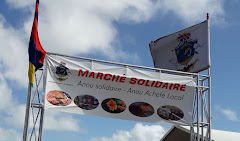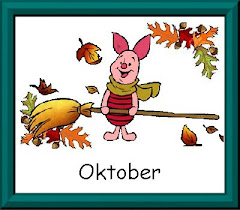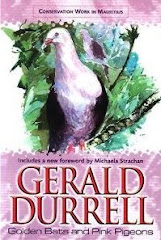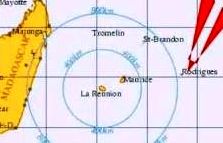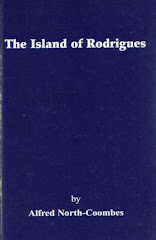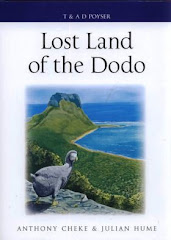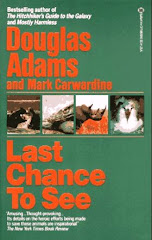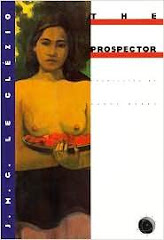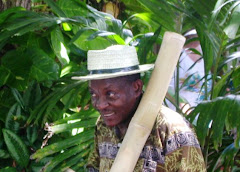Im Juni gab es ungewöhnlichen Besuch auf Rodrigues. Ein Riesensturmvogel hatte sich hierher verirrt und wurde von einem Fischer aus Baladirou aufgegriffen, der durch seine enorme Flügelspanne auf ihn aufmerksam wurde. Der Fischer war mit einer Pirogge unterwegs in der Lagune um nach seinen Fischkästen zu schauen, als er den Vogel entdeckte und ihn erst für eine Wildgans hielt.
Während er sich dem nicht ängstlichen Vogel näherte, fiel ihm auf , dass er schwächlich wirkte, so brachte er ihn an Land und fütterte ihn erstmal anständig mit Fisch und Oktopus. Wegen des Gesundheitszustands, und weil er mehr über seinen Schützling erfahren wollte, nahm der Fischer Kontakt zu der lokalen Abteilung von Wildlife Mauritius in Solitude auf, wo man ihn gleich Tests unterzog, um auszuschließen, dass er Träger der Vogelgrippe ist. Durch ein nach England eingeschicktes Foto an einen Experten von Wildlife konnte dann auch die Identität des 5 kg schweren Jungvogels geklärt werden.
Eine Woche lang päppelte Wildlife den Vogel noch auf und beobachtete ihn, Montag, den 27. Juni wurde er bei Pointe Coton außerhalb der Lagune zurück in die Freiheit entlassen. Ob er jemals wieder zurück in seine heimatlichen antarktischen Gefilde findet, mag bezweifelt werden, denn es sind mehr als 3000 km bis dorthin und in den örtlichen Wintermonaten Juni bis September gibt es starke Strömungen und Winde durch die dann üblichen Hochdruckgebiete in unserer Region.
Wohin auch immer es ihn zwischenzeitlich verschlagen hat, wir wünschen ihm alles Gute. Er ist nicht der erste Besucher aus der Antarktis in dieser Zeit, mehrfach wurde Rodrigues in den vergangenen Jahren auch von Robben besucht. -
A Giant Petrel visited our island in June, obviously the Antarctic bird had lost its trajectory due to the strong high pressure sytems we use to have during our local winter months in our regions and down south where the Giant Petrel usually live. The bird was found by a fisherman when he was out looking for his fish boxes in the lagoon ; as he got closer to the bird he realized that it was weak and that it was definitely not a wild goose as he had thought on first sight. He brought the animal on shore, took it home and fed it a decent Rodriguan meal of fresh fish, squid and octopus, the bird did not offer any resistance, was not scared at all, and felt better after the meal. As the fisherman was interested to know more about the birds' origin and how it would be best nursed back to more strength, he contacted the local branch of Wildlife Mauritius, where they took care of the young animal who had to undergo some testing first to make sure it was not a carrier of bird flu. It was not, and fed and looked after properly for about a week by Widlife Mauritius in Solitude, it was able to give freedom and the wild another try. On Monday, June 27, the Giant Petrel was released.
I have no idea if the bird had any chances to find back his track to get home, so even a little late, we wish the curious young bird all the best. It was the first Giant Petrel but not the only visitor from Antarctic regions, maybe you remember the seals which were here in 2008 and 2009?
Johnny Adélaide n'en revient toujours pas. Il a récupéré un Pétrel géant plus connu le Southern Giant Petrel qui s'est sans doute trompé de route. La taille majésteuse de l'oiseau a immédiatement accroché le regard de ce pêcheur qui réside à Baladirou. Les ailes déployées du pétrel géant font 1m80. L'oiseau pèse environ 5 kg. Mercredi, 22 juin dernier, comme à son habitude Johnny Adélaide prend la mer, seul , à bord de sa pirogue pour " al ev kasie" A quelques 200 mètres du rivage, dans le lagon, son regard croise un gros oiseau posé sur l'eau.
A première vue , il n'est nullement intrigué. "Au départ, je croyais que c'était un canard sauvage. J'ai continué mon trajet. Mais par la suite, j'ai remarqué qui'il était plus grand qu'un canard qu'il m'est parfois arrivé de croiser," confie le pêcheur. Le courant passe entre le pêcheur et l'étrange animal qui n'est nullement effarouché."L'oiseau est venu vers moi facilement. Il paraissait affaibli." L'homme décide aussitôt de venir en aide à son étrange trouvaille.Une fois sur la terre ferme il commenca à nourrir l'oiseau."Mon ti don li manz pwasson, mourgat ek ourit. I paret ki li pe repran la fors..."Face à l'état de l'animal et l'engoument d'en savoir plus à son sujet, Johnny Adélaide prend contacte même jour avec la branche de la Mauritius Wildlife Foundation (MWF) située à Solitude.
Jean Alfred Bégué , Fauna Officer à la MWF précise que comme le veut le protocole de l'organisme, le Southern Giant Petrel a subi des tests contre la grippe aviaire. "En dehors du fait que l'oiseau était affaibli, il n'est pas porteur du virus. Aussitôt qu'on a eu l'oiseau entre nos mains, j'ai envoyé un courrier et des photos de l'oiseau à Karl Johns, Scientific Manager de l'Angleterre. Il m'a par la suite envoyé des renseignements concernant le Pétrel Géant." Le Pétrel Gèant était placé en observation à Solitude. Durant son séjour, il a été nourri à base des fruits de mer, jusqu'à ce que son état s'améliorait. Il a été relâché lundi dernier au large de Pointe -Coton. Le Pétrel Géant retrové est un juvenile.C'est un oiseau du Sud provenant de la zone Antarctique. Il a des pattes palmées, des plumages noirs et un bec blanc. Il se nourrit principalement des fruits de mer, poissons, calamars voir même des bébés phoques. Selon la MWF, sa présence dans les eaux rodriguaises pourrait être attribuée aux anticyclones dans le sud de l'île qui l'a dérouté de sa trajectoire habituelle. (Source: Ann Carleen Gentil/L'express Rodrigues 30.06.2011)

Photo courtesy by Mauritius Wildlife Foundation Rodrigues
Und nun ein wenig mehr Hintergrund zu ihm und seinen Artgenossen-
and now some background about the species
Macronectes giganteus
Der Riesensturmvogel, auch Südlicher Riesensturmvogel genannt ist ein Brutvogel des antarktischen Festlands sowie vieler subantarktischen Inseln. Außerhalb der Brutzeit, in welcher der zu der Familie der Sturmvögel zählende Vogel im Gegensatz zum Hallsturmvogel in Kolonien brütet, verbringen sie ihr Leben überwiegend auf hoher See und sind dann bis zum südlichen Wendekreis beobachtbar. Ebenso wie die Hallsturmvögel werden auch die Riesensturmvögel von Seeleuten "Stinker" genannt, da sie einen ölhaltigen und stinkenden Mageninhalt erbrechen, wenn sie sich erschrecken. Sie sind dadurch in der Lage, sich schneller in die Luft zu erheben.
Der Riesensturmvogel erreicht eine Flügelspanne von bis zu 200 cm und eine Körperlänge von 84 bis 92 cm. Sein Federkleid ist von düsterem Graubraun, das an Kopf, Hals und Kehle auffällig heller gefärbt ist. Riesensturmvögel sind gut kenntlich an ihrem gewaltigen, mit Hornplatten versehenen Schnabel mit seiner verlängerten Nasen-Doppelröhre (Röhrennasen). Die kleinen hellen Augen sind von einem Federrad umgeben, die Farbe der Füße reicht von braun bis rauchschwarz.

Im Vergleich zum Albatros erscheint ihr Flug ungeschickter, da sie wenig elegant flattern oder in steifflügeliger Haltung mit tiefgehaltenem Kopf dahingleiten. Riesensturmvögel sind Aasfresser, ernähren sich von toten Meerestieren, die auf der Meeresoberfläche schwimmen, aber auch von jungen Pinguinen. Sie folgen häufig Schiffen auf der Suche nach Abfällen.
Giant Petrel feeding on a dead seal on South Georgia IslandPhoto: Mila Zinkowa
Der Riesensturmvogel hat ein zirkumpolares Verbreitungsgebiet. Er brütet auf Südgeorgien, den Prinz-Edward-Inseln, Crozet-Inseln, den Kerguelen und auf den Macquarie Islands. Zum Brutgebiet gehört außerdem die antarktische Halbinsel und auf Inseln vor der Küste der argentinischen Provinz Chubut. Brutplätze finden sich außerdem auf den Diego-Ramírez-Inseln und der Isla Noir vor Chile sowie den Gough-Inseln. Auf den Falklandinseln brütet ein großer Teil der weltweiten Population.
Riesensturmvögel brüten in lockeren Kolonien auf flachem Grund in Küstennähe. Das Nest ist eine flache Mulde. Das Gelege besteht aus einem Ei, das etwa zwei Monate lang bebrütet wird. Jungvögel werden im Alter von vier Monaten flügge. Southern Giant Petrel chick prior to fledging in early May
Southern Giant Petrel chick prior to fledging in early MaySource
All petrel species have dense plumage, webbed feet and deeply grooved and hooked bills. Many species of petrel breed in dense colonies on cliffs and steep rocky slopes, some of them 60 miles or more from the open sea on inland nunataks and mountain ranges. Petrels typically have long nostrils, indicating a strong sense of smell, unusual for birds. On human-inhabited islands, introduced cats and rats have severely reduced some populations of diving and burrowing petrels. Interestingly, most petrel species can regurgitate their stomach oil as a defense mechanism against predators.
The Southern Giant Petrel (Macronectes giganteus), also known as the Antarctic Giant Petrel, Giant Fulmar, Stinker, and Stinkpot, is a large seabird of the southern oceans. Its distribution overlaps broadly with the similar Northern Giant Petrel, though it overall is centered slightly further south. Adults of the two species can be separated by the colour of their bill-tip: greenish in the Southern and reddish in the Northern.
Petrel refers to St. Peter and from the story of him walking on water, which refers to how they run on top of the water as they are getting airborne. They have the ability of spitting a foul smelling concoction at predators.
The Southern Giant Petrel achieves sexual maturity at six or seven years of age; however the average age of first breeding is ten years. Its breeding season begins in October. Its nest is a mound of moss, grass, and stones with a depression in the center and located on bare or grassy ground. They form loose colonies except in the Falkland Islands where the colonies are much larger. One egg is laid and is incubated for 55–66 days. When the white chick is born it is brooded for two to three weeks and it fledges at 104–132 days.
This Petrel will feed on krill, squid, and offal in coastal and pelagic waters, and unlike most other Procellariiformes, this bird will eat carrion and even attack smaller seabirds. The males exclude females from the carcasses that they are feeding off.
2009 was a good year for this species as it was upgraded to a status of Least Concern from Near Threatened, by the IUCN. This downgrade is not as optimistic as it sounds as it is not so much due to a recovering population, but a clearer picture and more accurate censuses. Overall population trends show that in the 1980s there were 38,000 pair which dropped to 31,000 in the late 1990s followed by 46,800 presently. The Falkland Islands and most of the South Georgia Archipelago has shown increases from the 1980s to the present. Terre Adélie has shown a drastic reduction as the count fell to 10—15 pairs from 80 pairs in the 1980s. The official 10/3 generation trend is listed by BirdLife International at a 1%—9% declinatation, but it is stated that this is a conservative number. They elaborate that a best case scenario puts it at a 17% increase and a worst case scenario of a 7.2% reduction.
Major threats to the well-being of this species start with the typical accidental deaths caused by longline fishing as well as trawl fishing near the Falkland Islands. Between 2,000 and 4,000 were killed in 1997—1998 due to illegal longline fishing. Also the numbers of Southern Elephant Seal, which is an important source of food as carrion, have been shrinking. Human disturbances have also adversely affected this bird.
Sources & related:- Southern Giant petrel on wikipedia engl.
- Petrels/Antarctic Connection
- List of Birds of Mauritius on wikipedia engl.
- Mauritian Wildlife Foundation & Rodrigues Projects
- Ein Seehund in Rodrigues - a seal in Rodrigues../ 11.08.2008, photos on picasa here
- Augustbesuch....Visite en Août....August visitor../28.08.2009, photos on picasa here










































